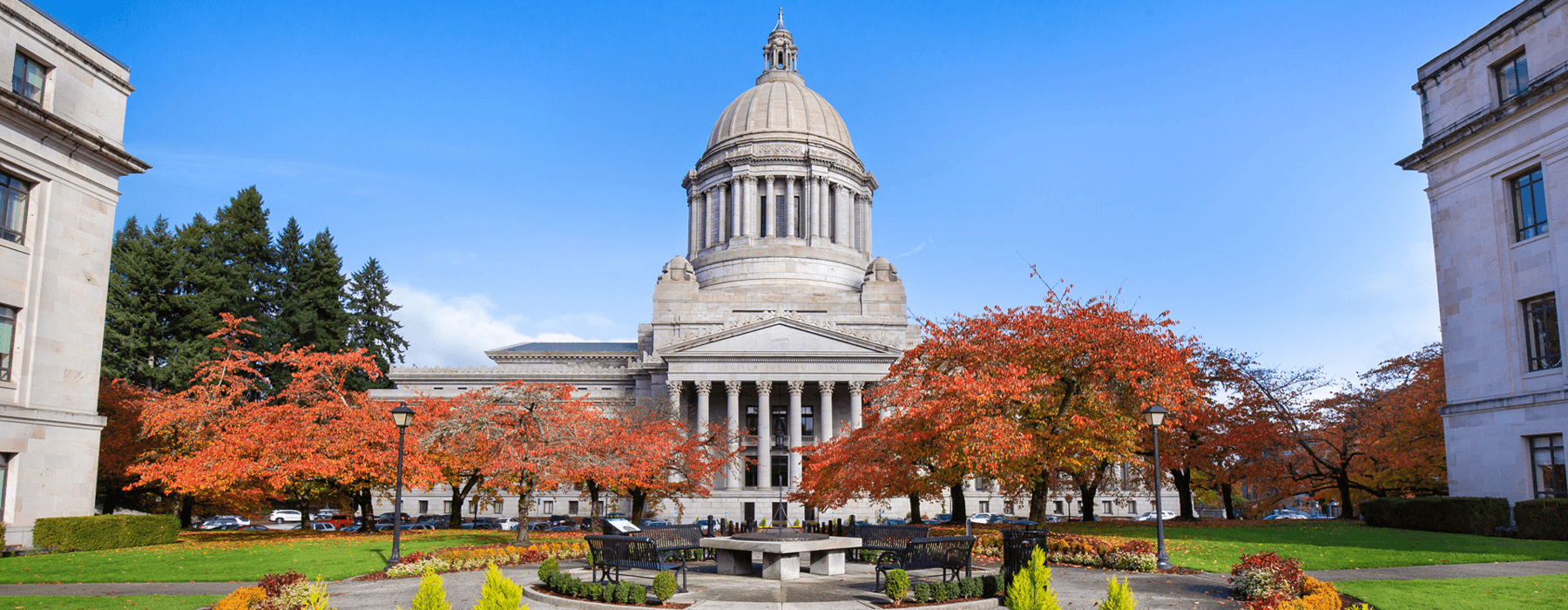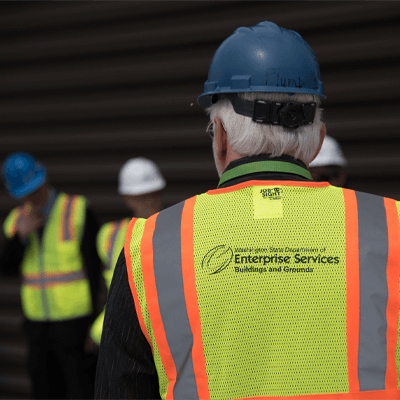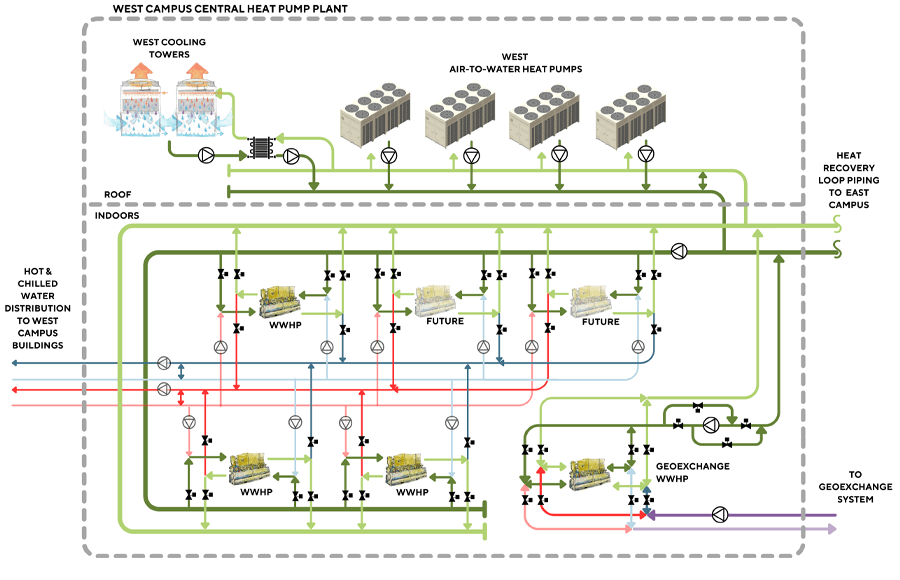
Building a Resilient,
Low-Carbon Future for
Washington State’s Capitol Campus
In August 2023, Washington’s Department of Enterprise Services (DES) conducted a global search for an engineering partner to guide the State’s transition to a sustainable clean energy economy - through a comprehensive Capitol Campus Decarbonization Plan.
After over 5,000 hours of detailed modeling and analysis, the final Decarbonization Report outlines a strategic, phased approach to modernize the Capitol Campus energy systems; reducing emissions, replacing aging infrastructure, and strengthening long-term energy resilience.
This plan responds directly to two critical pieces of state legislation: the Clean Buildings Performance Standard (CBPS) (House Bill 1257 and Senate Bill 5277) and the State District Energy System Decarbonization requirement (House Bill 1390). These laws mandate the reduction of energy use and greenhouse gas emissions from public buildings and campus-scale heating systems, commonly referred to as District Energy Systems.
Why This Plan Matters
The Capitol Campus’s central plant equipment is located in the 100-year-old Powerhouse building which serves nearly two million square feet of state facilities and plays a central role in Washington’s democratic process. This energy infrastructure is aging and vulnerable, inefficient, non-compliant, and at risk of total equipment failure. The result is a forward-looking roadmap to phase out fossil fuel use, improve energy efficiency, and ensure continued reliable operations of critical government facilities.
The Vision: A Modern, All-Electric Energy System
The project team evaluated four possible strategies for replacing the existing system. After extensive modeling, stakeholder engagement, and cost-benefit analysis, the preferred path forward is a district energy system based on highly efficient electric heat pumps. This fifth-generation design will:
Replace fossil fuels with electric-powered heating and cooling
Reuse energy by capturing and redistributing waste heat between buildings
Phase construction to minimize disruption and allow for maximum flexibility in budgeting
Improve reliability with built-in system redundancy
Avoid the need for a costly new electrical substation
The Process: Bottom-Up Modeling & Rigorous Engineering
Rather than start with top-down assumptions, the project team began with detailed building assessments, creating highly accurate energy models for each of the major buildings on campus. These models simulate energy performance during every hour of the year (8,760-hourly load profiles) and reflect:
Construction types and characteristics
Equipment age, condition, and efficiency
Real-time occupancy patterns
Actual utility data from newly installed submeters
Building models were then aggregated into a full “digital clone” of the Capitol Campus, allowing for iterative scenario testing. This process revealed the potential for significant heat recovery due to simultaneous heating and cooling loads within and across buildings.
Cost, Savings, and Risk Reduction
By using detailed 8,760-hour energy simulations for each building, the plan identifies a strategy that:
Cuts campus Energy Usage Intensity (EUI) by 53%
Saves approximately $759,000 annually in operating costs
Avoids more than $1 million per year in potential fines
Extends equipment lifespan and reduces maintenance requirements
Eliminates a single point of failure for campus heating
The Result: A Blueprint for Operational Resilience & Climate Leadership
While compliance and cost savings were major drivers, so was the commitment to reducing carbon emissions and creating a long-term, adaptable energy system. The plan is phased between 2027 and 2034 to manage budgets, minimize disruptions, and take advantage of emerging technologies. Though designed for Washington’s Capitol Campus, the approach, aligning with policy, leveraging deep modeling, and creating phased, cost-effective solutions is applicable to other states, higher education campuses, and public facilities nationwide.
DES and the project team have developed not just a plan, but a flexible implementation framework. With phased deployment, stakeholder alignment, and a validated path to compliance, this strategy ensures the Capitol Campus will continue to serve Washington State for decades in a manner that is resilient, efficient, and sustainable.
Read the full report here:
OUR SOLUTIONS
Heating, ventilation, and air conditioning
Smart meters and building controls
On-site solar and other renewable energy systems
LED lighting retrofits
Building envelope improvements
Water systems
CHP-Cogeneration
And more
CONTACT US





